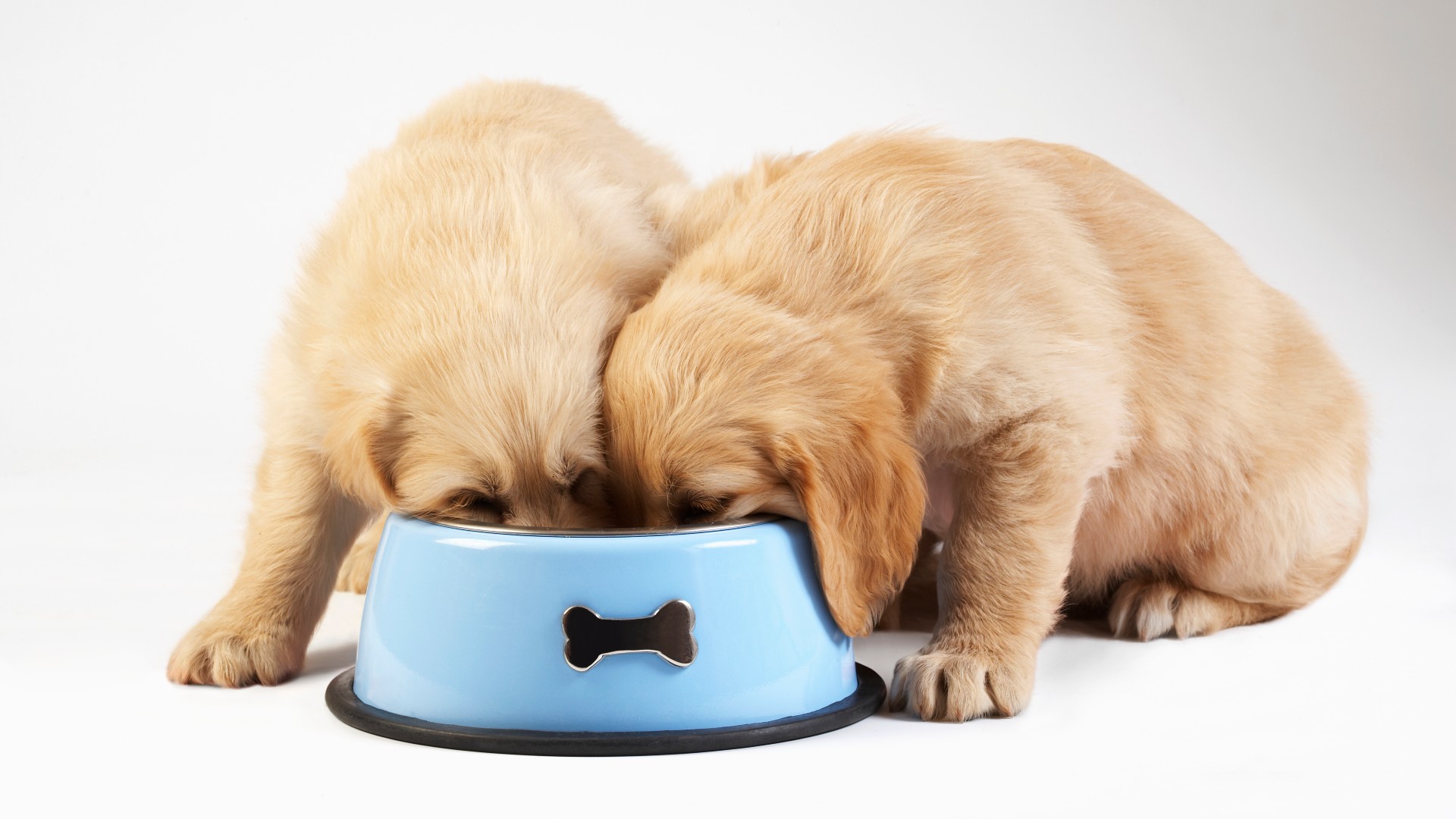How to change a puppy’s food
Find out how to change a puppy’s food safely, why you might need to make a swap, and what to look out for when you do

How to change a puppy’s food is a delicate business and many new pet parents find themselves wondering the best way to do it. You’ve likely already stocked up on the best puppy food, but if the formula doesn’t seem to be quite agreeing with your furbaby, it might be worth making a swap.
Right now is a crucial time in your puppy’s development, with their body going through a huge growth spurt and rapid development of their bones, muscles, immune system, and brain. Because of that, knowing when to abandon a particular food and switch your pup over to something else that’s more sustaining and nourishing, is as important as learning how to choose puppy food.
With that in mind, we’ve pulled together some guidelines on how to change a puppy’s food safely as well as some reasons why you might need to mix things up, and what to look out for when you’re transitioning your pup onto their new diet.
- How much should I feed my puppy? A vets guide
- A vets view on when to stop feeding puppy food to your dog
Reasons for changing a puppy’s food
There are a couple of reasons why you might need to make adjustments to what your puppy’s eating. Just like human foods, each brand of puppy food is made up of varying proteins, fiber levels, nutrients, and bacteria.
Lower quality brands, while more affordable, are more likely to use animal by-products and fillers in their meals and don’t always have the right fatty acid or vitamin and mineral balance. If you feel your puppy isn’t thriving the way you feel they should, it’s worth speaking to your vet to see if their diet may be the cause.
The other main reason for making a switch is allergies brought on by specific food sensitivities. These tend to develop before the age of six months and usually manifest in one or more of the following ways:
- Persistent scratching
- Ear infections
- Diarrhea or gas
- Constant licking or chewing
- Hair loss
- Bumps and rashes
- Coughing and wheezing
- Frequent sneezing
If you notice any of these symptoms in your pup, your vet can help you to execute an elimination diet to rule out the common suspects.
Get the best advice, tips and top tech for your beloved Pets
While failure to thrive and allergies are the two most common reasons to swap to different puppy food, there’s also another important factor - your furbaby may just a little fussier than most and not like the taste of the meal plan you currently have them on.
How to change a puppy's food

Whether you’re changing your pup’s food out of preference or because you’ve been advised to do so by their vet, we recommend transitioning them slowly over two weeks to avoid any problems.
Sudden changes that aren’t taking place under a vet’s guidance and observation can lead to more problems, particularly when it comes to stomach upsets and other digestive issues, so slow and steady is best to give their delicate systems time to adjust.
Days 1-3: For these first few days, put their regular food in one bowl and a few teaspoons of the new food in another bowl. Let them sniff it and get used to it and don’t worry too much about whether or not they eat it at this stage.
Days 4-6: Start mixing the two foods together, placing about three-quarters of their regular food and one-quarter of their new food in the same bowl.
Days 7-10: If the previous few days have gone well and they’re eating the new combination, give them equal portions of the old and new food.
Days 11-12: Swap the ratio’s now, giving your pup three-quarters worth of new food and one-quarter worth of their old food.
Days 13-14: Phase the old food out completely.
Once you’ve reached the end of the two-week period, your pup should be happily chowing down on their new food, but there are a few things worth watching out for while they’re making the transition.
Keep a watchful eye on your puppy
Minor tummy upsets aren’t uncommon when puppies get switched to a new kind of food, but you’ll want to chat to your vet if your furbaby starts vomiting, is feeling unwell, or stops eating.
When you first start introducing the new food, watch for diarrhea and hold back on increasing the portions until this has subsided. If runny stools happen further along in the transition, go back a few days and if need be, return to the old food for a week before trying again.
You’ll also want to avoid giving your pup any non-dog food during the transition as that will make it hard for you to identify whether the switch is proving successful or not.

Kathryn is a freelance writer who has been a member of the PetsRadar family since it launched in 2020. Highly experienced in her field, she's driven by a desire to provide pet parents with accurate, timely, and informative content that enables them to provide their fur friends with everything they need to thrive.
Kathryn works closely with vets and trainers to ensure all articles offer the most up-to-date information across a range of pet-related fields, from insights into health and behavior issues to tips on products and training.
When she’s not busy crafting the perfect sentence for her features, buying guides and news pieces, she can be found hanging out with her family (which includes one super sassy cat and a kitten), drinking copious amounts of Jasmine tea and reading all the books.
She has written for a range of publications, including Fit&Well, Top Ten Reviews, LiveScience, Goodto, and Product Hunt.
